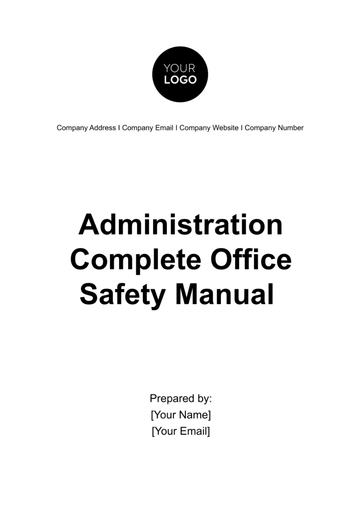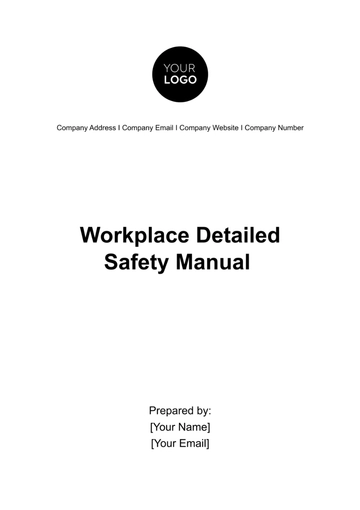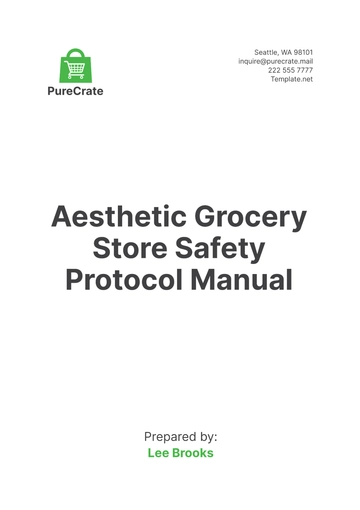Free Detailed Risk Assessment Manual

1.1 Introduction
1.1 Purpose of the Manual
This manual is designed as a comprehensive guide for identifying and assessing occupational hazards in diverse workplace environments. It serves as a key resource for Health & Safety professionals, equipping them with the necessary tools and knowledge to conduct thorough risk assessments. The primary objective is to ensure a safe working environment by systematically identifying potential hazards, evaluating risks, and implementing effective control measures.
1.2 Scope of the Manual
The scope of this manual encompasses a broad range of occupational environments, from traditional office settings to industrial workplaces. It covers various hazard categories including physical, chemical, biological, and ergonomic risks. The manual is applicable to a wide range of industries, providing adaptable guidelines that can be tailored to specific workplace needs.
2. Understanding Occupational Hazards
2.1 Types of Hazards
This section provides a detailed overview of various types of occupational hazards.
Hazard Type | Description | Common Examples |
Physical | Hazards that can cause bodily harm due to external forces or environmental conditions. | Noise, vibration, radiation, extreme temperatures |
Chemical | Risks involving exposure to harmful chemicals. | Solvents, pesticides, gasses |
Biological | Hazards originating from biological sources. | Viruses, bacteria, fungi, parasites |
Ergonomic | Risks related to the design of work tasks, postures, and repetitive movements. | Improper workstation setup, repetitive tasks |
Psychosocial | Hazards affecting mental health and well-being. | Work-related stress, harassment, workplace violence |
2.2 Impact of Hazards
Occupational hazards can have profound impacts on employee health and safety. Physical hazards can lead to acute injuries or long-term health issues like hearing loss or musculoskeletal disorders. Chemical hazards may cause respiratory issues, skin irritation, or even chronic conditions such as cancer. Biological hazards pose risks of infection or illness, particularly in healthcare settings. Ergonomic hazards can result in musculoskeletal injuries, significantly impacting an employee's ability to perform work tasks. Psychosocial hazards, often overlooked, can lead to stress-related illnesses, impacting mental health and overall workplace morale. Understanding these impacts is crucial for effective hazard identification and risk assessment.
3. Legal and Regulatory Framework
3.1 Relevant Legislation
This section outlines the key legislative frameworks that govern occupational health and safety. These laws are crucial for ensuring legal compliance in risk management practices.
Legislation | Jurisdiction | Key Provisions |
Workplace Safety Act 2025 | National | Outlines general workplace safety requirements, including mandatory risk assessments and reporting procedures. |
Chemical Handling Law 2028 | National | Sets standards for the safe handling, storage, and disposal of hazardous chemicals. |
Ergonomics Regulation 2030 | State-Level | Mandates ergonomic assessments and interventions in workplaces with repetitive task-oriented jobs. |
3.2 Compliance Requirements
Adhering to these laws and regulations is not only a legal obligation but also a moral one to ensure employee safety. Compliance involves conducting regular risk assessments, implementing necessary safety measures, providing adequate training to employees, and maintaining records of safety procedures and incidents. Failure to comply can result in legal consequences, including fines and liability in the event of workplace accidents. Regular updates to safety policies and procedures are essential to keep pace with changes in legislation and emerging workplace hazards.
4. Risk Assessment Process
4.1 Identifying Hazards
Identifying hazards is the first crucial step in the risk assessment process. This involves:
Conducting workplace inspections.
Reviewing accident and incident records.
Consulting with employees about potential risks in their work areas.
Considering non-routine operations such as maintenance, cleaning, or changes in production cycles.
4.2 Evaluating Risks
Once hazards are identified, the next step is to evaluate the risks associated with them. This involves considering the likelihood of the hazard occurring and the severity of its potential impact.
Risk Level | Likelihood | Severity | Example |
High | Very likely to occur | Severe harm or injury | Chemical spill without proper containment measures |
Medium | Likely to occur | Moderate harm or injury | Repetitive strain from poorly designed workstations |
Low | Unlikely to occur | Minor harm or injury | Minor slips or trips in well-maintained areas |
5. Risk Control Measures
5.1 Hierarchy of Controls
Effective risk management involves applying a hierarchy of control measures, ranging from the most to the least effective. The table below illustrates this hierarchy.
Control Level | Description | Examples |
Elimination | Removing the hazard entirely from the workplace. | Substituting hazardous chemicals with safer alternatives. |
Substitution | Replacing the hazard with a less hazardous option. | Using less noisy machinery. |
Engineering Controls | Isolating people from the hazard. | Installing guards on machinery, improving ventilation systems. |
Administrative Controls | Changing the way people work. | Implementing rotation schedules to reduce exposure, providing training. |
Personal Protective Equipment (PPE) | Protecting the worker with safety equipment. | Using gloves, helmets, safety glasses. |
5.2 Implementing Controls
Once appropriate control measures are identified, their implementation should be planned and executed. This involves:
Prioritizing controls based on effectiveness and feasibility.
Engaging with employees and management for support and understanding.
Regularly reviewing and maintaining control measures to ensure their ongoing effectiveness.
6. Training and Awareness
6.1 Employee Training
Effective risk management also relies on well-trained employees who are aware of potential hazards and how to mitigate them.
Content of Training: Training should cover hazard recognition, the use of control measures, emergency procedures, and the use of PPE.
Methods of Delivery: Various methods such as workshops, e-learning, and practical demonstrations can be employed.
6.2 Continuous Education
The field of occupational health and safety is continually evolving. Therefore, continuous education is key.
Regular Updates: Keeping policies and training up-to-date with current best practices and legislative changes.
Feedback Mechanism: Establishing channels for employees to provide feedback on safety issues and training effectiveness.
7. Monitoring and Review
7.1 Regular Assessments
Regular assessments are critical to ensuring the ongoing effectiveness of risk management strategies.
Frequency of Assessments: It's recommended to conduct formal risk assessments annually, or whenever significant changes occur in the workplace.
Assessment Process: This involves revisiting all previously identified hazards, evaluating the effectiveness of existing control measures, and identifying new hazards.
7.2 Updating Policies
Policies must be dynamic and evolve based on new information, technology, and incidents.
Procedure for Updates: A formal review committee should be established to oversee policy updates. They should gather data from recent assessments, incident reports, and employee feedback.
Documentation: All changes should be well-documented and communicated to all employees.
8. Conclusion
8.1 Summary of Best Practices
This manual has outlined a comprehensive approach to occupational hazard identification and risk assessment.
Best practices include a thorough understanding of different types of hazards, adherence to legal and regulatory frameworks, effective implementation of the hierarchy of controls, regular training and education of employees, and continuous monitoring and review of risk management practices.
8.2 Future Directions
The field of occupational health and safety is ever-evolving, with new challenges and solutions emerging.
Embracing Technology: Future trends may include the increased use of technology for hazard identification and risk management.
Global Perspectives: As businesses become more globalized, understanding and implementing international health and safety standards will become increasingly important.
- 100% Customizable, free editor
- Access 1 Million+ Templates, photo’s & graphics
- Download or share as a template
- Click and replace photos, graphics, text, backgrounds
- Resize, crop, AI write & more
- Access advanced editor
Unleash the power of risk management with Template.net's Detailed Risk Assessment Manual Template. This editable and customizable template, enhanced by our Ai Editor Tool, provides a comprehensive framework for assessing and mitigating risks. Streamline your risk assessment process effortlessly, ensuring the safety and security of your endeavors with Template.net's cutting-edge solutions.





























